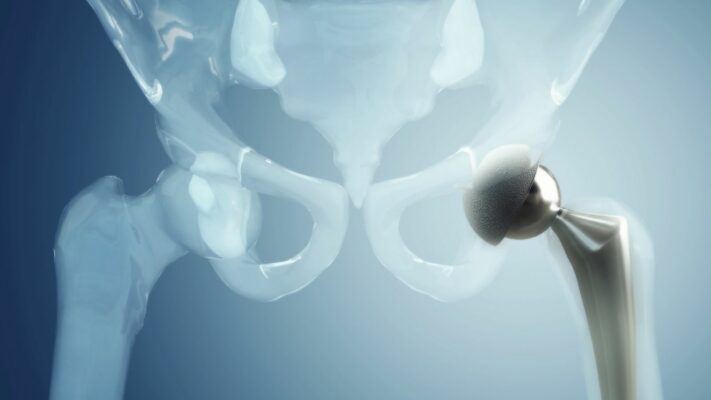Prof. Dr. Murat Demirel, one of the best orthopedic doctors treating knee cartilage injuries in Ankara, stands out with his many years of experience in diagnosing and treating this condition, which occurs when the cartilage tissue on the joint surface is damaged due to injury or wear. Knee cartilage injuries can develop from sports injuries, trauma, repetitive strenuous movements, or age-related degeneration, and if left untreated, may lead to permanent joint problems. Among the hospitals in Ankara that treat knee cartilage injuries, Prof. Dr. Demirel offers personalized treatment plans to his patients in centers with advanced medical equipment and high hygiene standards.
During the treatment process, depending on the severity of the cartilage damage, modern methods such as medication, physical therapy, PRP or stem cell applications, microfracture technique, or cartilage transplantation may be used. With doctor’s recommendations after knee cartilage injury treatment, recovery becomes faster, safer, and long-lasting. In addition, by providing transparent and up-to-date information about knee cartilage injury treatment prices in Ankara, patients are helped to make informed decisions. You can also protect your knee health, reduce pain, and increase your freedom of movement by contacting us immediately to schedule an appointment.
| Disease Name | Knee Cartilage Injury (Chondral or Osteochondral Lesion) |
| Affected Area | Knee joint (femoral condyle, patella, tibial plateaus) |
| Symptoms | Knee pain, swelling, limited range of motion, catching or giving way sensation |
| Diagnostic Methods | Physical examination, MRI, arthroscopy |
| Causes | Trauma, overloading, sudden twisting movement of the knee, age-related degeneration |
| Risk Factors | Sports injuries, anatomical abnormalities of the knee, obesity |
| Treatment Methods | Conservative (rest, ice, NSAIDs, physical therapy), arthroscopic debridement, microfracture, mosaicplasty, autologous chondrocyte implantation (ACI) |
| Surgical Options | Microfracture, mosaicplasty, ACI, osteochondral allograft transplantation |
| Complications | Progression of the lesion, development of arthritis, postoperative stiffness |
| Recovery Process | A few weeks with conservative treatment, 3–6 months after surgery |
| Prevention Methods | Strengthening surrounding knee muscles, protection from impacts, warming up before sports |
| Follow-up Process | Monitoring with MRI and clinical evaluation, physical therapy programs |


Prof. Dr. Murat Demirel
Orthopedics and Traumatology Specialist
Orthopedics Specialist Prof. Dr. Murat Demirel was born in Ankara in 1974. He completed his primary education at Ankara Kavaklıdere Primary School and his secondary and high school education at Ankara Atatürk Anatolian High School. Dr. Demirel graduated from Ankara University Faculty of Medicine in 1998 and completed his residency in Orthopedics and Traumatology at Ankara Numune Training and Research Hospital, 1st Orthopedics and Traumatology Clinic, in 2004.
PhD
Ankara University Institute of Health Sciences
Specialization
Ankara Numune Training and Research Hospital, 1st Orthopedics Clinic
Medical School
Ankara University Faculty of Medicine
Yazı İçeriği
Why Are Knee Cartilage Problems So Important and What Is Cartilage Tissue?
You can think of the knee joint as the perfect harmony of two bones moving over each other. The smooth, shiny, white, and slippery tissue covering the ends of the thigh bone (femur) and shin bone (tibia) is called “articular cartilage.” Let’s use an analogy: cartilage is like the smooth Teflon coating on a non-stick pan. Thanks to this coating, the bones glide over each other during movement with almost zero friction. The “oil” that provides this slipperiness is the joint fluid (synovial fluid). Another vital function of cartilage is to act as a cushion by absorbing body weight and the impacts during movement, thus protecting the underlying bone. In other words, it both prevents friction and works as a shock absorber.
So why should knee cartilage problems be taken so seriously? Because cartilage tissue has one very important disadvantage: it has almost no self-healing ability. Most tissues in our body can heal themselves thanks to blood vessels that nourish them when they are cut or damaged. However, cartilage has no blood vessels. It receives nutrients only very slowly by diffusion from the joint fluid and the underlying bone. This is similar to a plant trying to grow in dry soil. Therefore, once cartilage is damaged, it is nearly impossible for the body to repair it in its original form. Even a small scratch or crack may grow over time, leading to the breakdown of the entire cartilage layer, resulting in osteoarthritis. This is why detecting cartilage damage early and taking the right steps is the most important investment you can make for the future of your knee.
What Are the Types of Knee Cartilage Problems?
When we say “knee cartilage problem,” we are not talking about a single condition. It is a broad umbrella term covering a group of problems with different causes and characteristics. The most common types of knee cartilage problems are:
- Osteoarthritis
- Post-traumatic Arthritis
- Rheumatoid Arthritis
- Focal Cartilage Damage (Cartilage Lesions)
- Meniscus Tears
Each of these types tells a different story. Osteoarthritis is usually a “wear and tear” problem caused by time and use. Over the years, the cartilage gradually thins, loses its smoothness, and decreases in quality. Although it is most common after the age of 50, it can also begin earlier due to genetic predisposition or obesity.
Post-traumatic arthritis, as the name suggests, is a result of a past knee injury. A meniscus tear, ligament rupture, or fracture involving the joint you had years ago may have seemed healed at the time but may have disrupted the mechanics of the joint. This faulty mechanics can later cause the cartilage to wear down faster, paving the way for arthritis development.
Rheumatoid arthritis is a completely different condition. It is an autoimmune disease in which the body’s immune system mistakenly attacks its own joint lining (synovial membrane). This attack causes persistent inflammation in the joint, and this inflammation damages the cartilage and even the bone. The problem here is not mechanical wear but a systemic inflammatory process.
Focal cartilage damage usually occurs in young and active individuals as a result of a sports injury or sudden trauma, causing a piece of cartilage to break off or a specific area to be damaged. Like a pothole in a road, a full-thickness localized defect forms in the cartilage. This is different from widespread wear like osteoarthritis.
Finally, meniscus tears are one of the best-known cartilage problems. These are tears of the meniscus, the C-shaped shock absorbers in the knee. They can be traumatic (in young people) or degenerative (in middle-aged and older individuals). It should be noted that meniscus tissue and the hyaline cartilage covering the joint surface are different structures, and their treatments differ as well.
What Are the Risk Factors for Knee Cartilage Problems and Why Do They Occur?
There is no single culprit that damages the health of the cartilage in our knees. Usually, these problems occur as a result of multiple factors coming together. The main risk factors for cartilage problems are as follows:
- Advancing age
- Excess weight (Obesity)
- Past knee injuries (meniscus, ligament tear, fracture)
- Repetitive and strenuous activities
- Genetic predisposition
- Gender (Some types are more common in women)
- Structural misalignments in the legs
Aging is inevitable, and with age, the water content of cartilage decreases, and its ability to regenerate declines. Excess weight may be the most important and modifiable risk factor. Remember: every 1 kilogram you gain puts 3–4 kilograms of extra load on your knees while walking and 5–6 kilograms while climbing stairs. It is like constantly carrying a heavy backpack, shortening the life of your cartilage. In addition, fat tissue not only creates mechanical load but also accelerates cartilage destruction biochemically by releasing certain chemicals (adipokines) into the blood, creating a mild but persistent inflammation.
Previous injuries disrupt the stability of the knee, causing loads to be distributed unevenly. For example, a knee with a torn ACL is no longer as stable, which places abnormal stress on the cartilage and meniscus. Similarly, repetitive activities such as frequent squatting or heavy lifting can accelerate cartilage wear. Misalignments in the legs, such as bowlegs (“O-shaped”) or knock knees (“X-shaped”), cause the load to be placed on only one side (inner or outer) of the knee, leading to early cartilage failure in that area. Finally, if there is a family history of early osteoarthritis, you may have a genetic predisposition that puts you at risk as well.
Contact us for detailed information and an appointment!
Do the Symptoms I Experience Mean I Have Knee Cartilage Problems?
Knee cartilage problems can present with different symptoms depending on the type, size, and location of the damage. If you are experiencing one or more of the symptoms below, it is advisable to consult a specialist. The most common symptoms of cartilage damage are:
- Pain
- Swelling
- Stiffness and tightness
- Limited range of motion
- Noises from the knee (Crepitus)
- Locking
- Catching sensation
- Giving way or instability
Pain is usually the most common and the first reason for seeking medical attention. This pain increases with activities that put stress on the knee, such as walking, climbing stairs, and running, and decreases with rest. In advanced stages, resting pain may also be present. Swelling is a sign of fluid accumulation in the joint and often increases after activity. Stiffness, especially in the mornings after waking up or after sitting for a long time, makes it difficult to move your knee. It usually eases after a few minutes of movement.
Noises from the knee (crepitus), such as grinding, popping, or friction, result from roughened cartilage surfaces rubbing against each other. Locking is when the knee suddenly gets stuck in one position and cannot be moved. This is often a sign of a trapped meniscus fragment or a loose piece of cartilage and should be taken very seriously. Catching is the feeling that something is briefly interfering during movement. Giving way or instability feels like your knee suddenly loses strength and cannot support you. The presence of these symptoms may indicate an underlying mechanical problem.
How Is an Accurate Diagnosis Made for Knee Cartilage Problems?
The road to the right treatment always begins with the right diagnosis. The diagnostic process is a multi-step procedure where we bring together clues like a detective.
The first step is carefully listening to you. We learn in detail when and how your complaints started, the nature of your pain, which movements worsen or relieve it, whether you have had a previous injury, your lifestyle, and your expectations. This is the most important part of your history.
The second step is a comprehensive physical examination. By comparing both knees, we assess posture, swelling, or deformities. By palpating different areas of your knee, we identify tender spots. By bending and straightening your knee, we check your range of motion. We apply specific tests to assess the integrity of your ligaments and menisci. Even observing your gait can provide us with important clues.
The third step, if necessary, is using imaging methods.
X-ray: Usually our first choice. It shows bone structures very well. It helps us detect fractures, bone spurs (osteophytes), and joint space narrowing (an indirect sign of cartilage loss). However, X-rays do not show cartilage and meniscus. So even if your X-ray is “clean,” it does not mean your cartilage is healthy.
Magnetic Resonance Imaging (MRI): The gold standard method that allows us to see cartilage, meniscus, ligaments, and all other soft tissues in detail. MRI clearly shows the location, size, and depth of cartilage injury or wear. However, it should be noted that not every finding seen on MRI is the cause of your pain. Especially after middle age, many people have degenerative meniscus tears that cause no symptoms. Therefore, MRI results should always be interpreted together with your complaints and physical examination findings. We treat the patient, not the MRI report.
How Can Knee Cartilage Problems Heal Without Surgery?
One of the most common questions from our patients is, “Can I get rid of this problem without surgery?” The answer is yes, for most patients. Non-surgical knee cartilage treatment provides quite successful results, especially in early and moderate stages, and forms the cornerstone of our treatment plan. The goal is to control pain, improve knee function, and slow the progression of damage. So how does cartilage injury heal? Here are our non-surgical options:
Lifestyle and Activity Adjustments: This is the cornerstone of treatment.
Weight Control: If you are overweight, losing weight is the greatest gift you can give your knees. Every kilo lost drastically reduces the load on your knees.
Activity Modification: It is important to avoid or perform more cautiously the activities that trigger your pain (such as squatting, jumping, or running on hard surfaces).
Knee-Friendly Exercises: Instead of high-impact sports, turning to sports that do not stress your knees is a great option. These include:
- Swimming
- Water exercises
- Cycling (with correct seat adjustment)
- Elliptical cycling
Physical Therapy and Rehabilitation: Physiotherapists are your most important partners in this process. With a personalized exercise program, the muscles around the knee (especially the quadriceps) are strengthened. Strong muscles share the load on the knee, protect the joint, and increase stability. Stretching exercises provide flexibility, while balance exercises reduce the risk of falls.
Medication: Medicines are usually used to control pain and inflammation.
Simple Painkillers (Paracetamol): May be the first choice for mild pain.
Non-Steroidal Anti-Inflammatory Drugs (NSAIDs): This group of drugs (ibuprofen, naproxen, etc.) suppress both pain and inflammation. However, since they may have side effects on the stomach and kidneys, they should be used under doctor supervision. Topical creams reduce the risk of systemic side effects.
Supplements: There are many products on the market (glucosamine, chondroitin, collagen, etc.) under the name of cartilage-regenerating drugs. There is no conclusive scientific evidence that these supplements rebuild cartilage. However, some patients report pain relief. Always consult your doctor before using such products.
Intra-Articular Injections: These allow us to deliver medication directly into the problematic joint.
Corticosteroid Injections: A powerful anti-inflammatory. Especially effective in “putting out the fire” when there is severe pain, swelling, and flare-up in the knee. However, its effect is temporary (a few weeks to a few months), and frequent repetition may damage the cartilage; thus, it is not recommended more than 3–4 times per year.
Hyaluronic Acid (Gel or Rooster Comb Injection): By adding hyaluronic acid, the main component of normal joint fluid, from outside, it aims to increase joint lubrication and support shock absorption. Its effect starts slower than corticosteroids but may last longer (about 6 months).
PRP (Platelet-Rich Plasma): In this method, the patient’s own blood is drawn, processed, and the portion rich in platelets (repair cells) and growth factors is separated and injected into the knee. The idea is to harness the body’s natural healing power and concentrate it in the damaged area to trigger a biological repair process. It is a promising method, especially for early and moderate cartilage wear in the knee.
In Which Cases Is Surgery Required for Knee Cartilage Problems?
If, despite trying non-surgical methods, the patient’s complaints persist, their quality of life has significantly decreased, or the cartilage damage is of a nature requiring surgical intervention (for example, if there is a fragment causing locking), then we begin to discuss surgical options. When making the surgical decision, we consider many factors such as the patient’s age, activity expectations, type and size of the damage.
Surgical methods are usually performed arthroscopically, meaning “minimally invasive,” using small incisions with the help of a camera. The main surgical treatment options are:
Arthroscopic Debridement and Shaving (Chondroplasty): The process of cleaning up damaged, rough, and frayed cartilage tissue and smoothing the surface. This is not a repair method but rather a temporary “cleaning” procedure to relieve symptoms.
Microfracture: A method aimed at creating small holes in the bone beneath the damaged cartilage to allow stem cells from the bone marrow to leak into the area and form new repair tissue. The new tissue that forms (fibrocartilage) is not as durable as the original cartilage but may be effective in small lesions.
Mosaicplasty (OATS): This method can be likened to patching a barren area in a garden with healthy turf taken from another area. Healthy cartilage and bone cylinders harvested from a non-weight-bearing part of the patient’s own knee are transplanted into the damaged area. This way, the damaged site is repaired with original-quality hyaline cartilage.
Cartilage Cell Transplantation (ACI/MACI): A two-stage treatment. In the first surgery (arthroscopically), a very small piece of healthy cartilage is taken from the patient. This sample is sent to the lab, where cartilage cells (chondrocytes) are multiplied into millions. In a second surgery, these cultured cells are transplanted into the damaged area. This method is suitable for young and active patients with extensive cartilage damage.
Knee Replacement (Arthroplasty): In advanced cases where cartilage damage covers the entire joint and severe osteoarthritis has developed, the worn joint surfaces are replaced with an artificial joint made of special materials such as metal and polyethylene. In the right patient, knee replacement is extremely successful in eliminating pain and restoring function and is usually considered the last resort when joint-preserving surgeries are no longer suitable.
What Is the Recovery Process and Rehabilitation After Knee Cartilage Surgery?
Another common concern of our patients is the postoperative process. A successful surgery is only half of the equation. The other half is a rehabilitation program carried out patiently and carefully. How long does it take for a knee cartilage injury to heal? The answer depends entirely on the type of surgery performed and your compliance with the process. After a simple cleaning procedure, you may return to daily life within a few weeks, while return to sports after cartilage cell transplantation may take up to a year.
The rehabilitation process has general goals:
- Control pain and swelling
- Regain joint range of motion
- Increase muscle strength and control
- Gradually return to normal walking and daily functions
- Safely return to sports or desired activity levels
You will work closely with your physiotherapist during this process. The first weeks generally involve rest, applying ice, elevating the leg, and using crutches without bearing weight on the operated leg. Over time, passive motion devices (CPM), gentle exercises, followed by strengthening and balance exercises are added to the program. Being patient and not rushing during this period is vital for the health of the repaired tissue.
Contact us for detailed information and an appointment!
Frequently Asked Questions
What is a knee cartilage injury and how does it occur?
A knee cartilage injury is the damage of the cartilage tissue covering the knee joint, which prevents the bones from rubbing against each other. It can occur due to sudden trauma, falling on the knee, sports injuries, overuse of the knee, osteoarthritis, or repetitive minor impacts.
What are the symptoms of cartilage injury?
The most common symptoms of cartilage injury include knee pain, catching sensation during movement, occasional locking, swelling, limited range of motion, and clicking or grinding sounds from the knee. Pain may increase especially when climbing stairs or squatting.
How is cartilage injury diagnosed?
Diagnosis begins with a physical examination by a doctor. In addition, knee X-rays and magnetic resonance imaging (MRI) are used to evaluate the cartilage tissue and determine the extent of the injury.
Can a knee cartilage injury heal on its own?
Since cartilage tissue is not rich in blood vessels, it is difficult for it to fully heal on its own. In mild injuries, symptoms may decrease, but large and deep damages can lead to permanent problems.
How is cartilage injury treated?
Treatment varies depending on the severity of the injury. In mild cases, rest, cold therapy, pain relievers, physical therapy, and exercises are recommended. In more severe cases, PRP, stem cell applications, or arthroscopic surgery may be performed to repair the cartilage.
In which cases is surgery necessary?
In large, deep, or bone-reaching cartilage injuries, if conservative methods fail, arthroscopic surgery or advanced methods such as microfracture and mosaicplasty may be required.
Is it possible to return to sports after cartilage injury?
After treatment and rehabilitation, especially in mild injuries, it is possible to return to sports. However, serious cases require long-term protection and caution. A doctor and physiotherapist’s evaluation is mandatory before returning to sports.
Is there a risk of recurrence of cartilage injury?
Yes, especially if risk factors such as overloading the knee, sports activities, or obesity continue, cartilage injury can recur. Strengthening muscles and taking preventive measures can reduce this risk.
How can cartilage injury be prevented?
Strengthening the muscles around the knee, using proper sports shoes and equipment, avoiding excessive strain, and maintaining weight control are effective in preventing cartilage injuries.
What happens if knee cartilage injury progresses?
Untreated cartilage injuries may lead to osteoarthritis and permanent joint damage over time. In advanced stages, pain increases, and limited mobility may become permanent.




